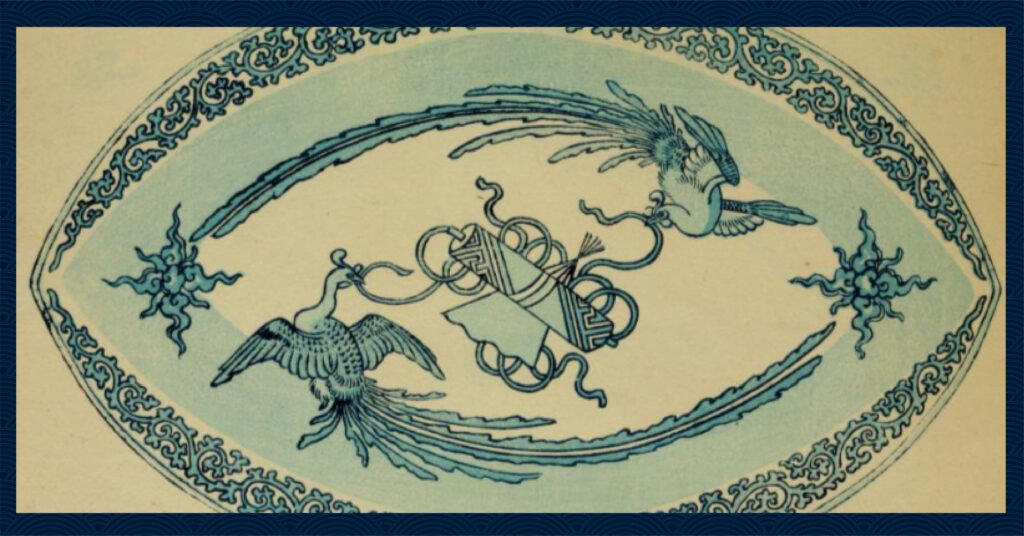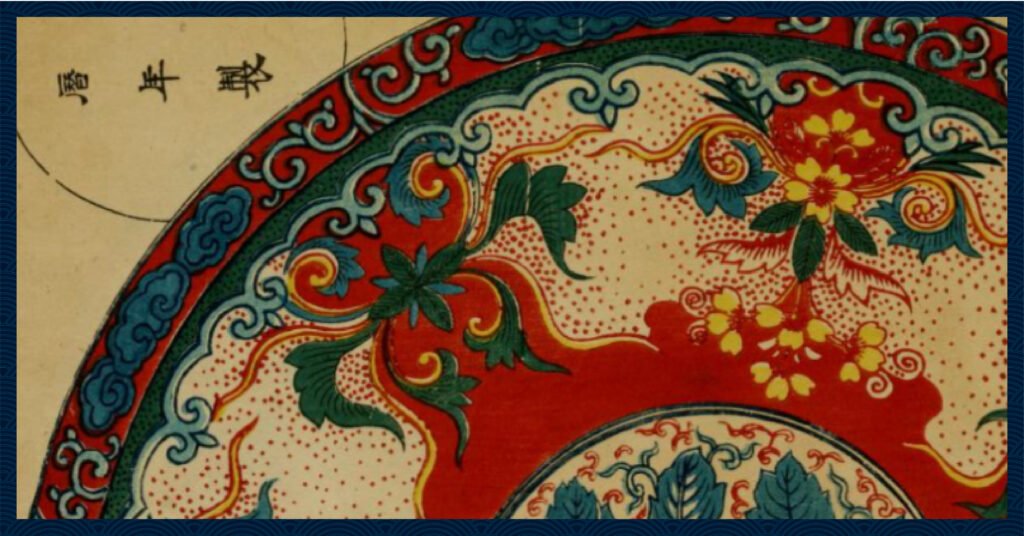In the realm of Japanese traditional crafts, historical documents that transmit techniques and aesthetic sensibilities to future generations are invaluable treasures. The “Toki Zukan” (Pottery Illustrated Catalog) is one such extraordinary resource—a comprehensive seven-volume collection of Japanese pottery illustrations created by Haruna Shigeharu (1847-1913), a master pottery artist who flourished during the Meiji and Taisho periods. Recently digitized and made available through the Internet Archive, this rare collection features exquisitely detailed brush drawings, some enhanced with brilliant coloration, offering a precious window into Japan’s ceramic heritage during the late 19th century. This article explores Haruna’s life and work, the artistic value of his Japanese pottery illustrations, and their significance in both historical and contemporary contexts.
Haruna Shigeharu (1847-1913): Master of Pottery Illustration
Born in 1847 in Kaga (present-day Ishikawa Prefecture), Haruna Shigeharu established himself as an influential figure in Japanese ceramic arts. He studied under Tonda Kyokuzan (born Tonda Tokujiro), the son of Tondaya Toemon, where he honed his skills in pottery illustration—an art form that combines technical precision with aesthetic sensibility.
In 1889, Haruna’s expertise earned him recognition as a model craftsman at the Tokyo Vocational School (now Tokyo Institute of Technology). There, he worked alongside Gottfried Wagener, a German scientist who played a crucial role in modernizing Japanese ceramic techniques. While Wagener’s contributions to Japanese ceramics are well-documented, it was the exceptional skill and knowledge of Japanese artisans like Haruna that proved essential to this cultural exchange.
For Western readers unfamiliar with this period, the Meiji era (1868-1912) marked Japan’s rapid transformation from an isolated feudal society to a modern industrialized nation. During this time, Japan strategically adopted Western technologies while working to preserve its cultural identity—creating a fascinating hybrid of traditional craftsmanship and modern production methods.
Haruna later worked at the Kyoto City Ceramic Research Institute, where he dedicated himself to researching and developing ceramic production techniques from across Japan. Beyond the “Toki Zukan,” he was also known for his “Kachō Gashū” (Collection of Flower and Bird Paintings), examples of which are preserved in various museums. Until his death in 1913 at the age of 67, Haruna remained committed to preserving and advancing Japan’s ceramic traditions through his remarkable Japanese pottery illustrations.

Japanese Ceramic Culture: Harmony of Beauty and Utility
To appreciate the significance of Haruna’s work, one must understand the place of pottery in Japanese culture. Ceramics in Japan, known as “yakimono” (fired things), have evolved distinctively since the Jōmon period (approximately 14,500-1000 BCE), with regional traditions developing unique characteristics throughout the archipelago.
Unlike porcelain, Japanese pottery (tōki) is typically fired at temperatures between 800-1200°C and valued for its earthiness, warmth, and organic qualities. What distinguishes Japanese ceramics from many other traditions is how they transcend mere functionality to become objects of profound aesthetic appreciation.
Japanese pottery is deeply intertwined with traditional practices such as the tea ceremony (sadō or chadō) and flower arrangement (ikebana). The tea ceremony, which emerged in the 15th century and was refined by masters like Sen no Rikyū, elevated humble ceramic vessels to objects of contemplation, embodying the aesthetic principles of wabi (austere beauty) and sabi (appreciation of impermanence).
The Meiji period, when Haruna created his Japanese pottery illustrations, was characterized by tension between embracing Western influences and preserving Japanese traditions. Haruna’s “Toki Zukan” emerges from this context as both a practical document and a passionate defense of Japan’s ceramic heritage.
“Toki Zukan”: A Treasury of Meiji-Era Ceramic Art
Completed around 1900 during the late Meiji period, “Toki Zukan” consists of seven comprehensive volumes. The collection’s most remarkable feature is its meticulous line drawings of pottery, rendered with architectural precision. These Japanese pottery illustrations present both elevational and plan views, accurately documenting the forms and dimensions of ceramics from that era.
The diversity of objects depicted is particularly impressive. Beyond conventional tableware, the collection encompasses vases, bento boxes, ceramic packaging boxes, and even the textiles used to wrap pottery. Some pieces feature vibrant coloration, capturing the decorative beauty of the original ceramics with remarkable fidelity.
Each volume contains dozens, sometimes hundreds, of examples, creating an encyclopedic record of styles and designs popular during this pivotal period. For instance, volume three features blue-and-white porcelain vases (sometsuke) that reveal the fascinating cultural synthesis of the era—Western influences reinterpreted through a distinctly Japanese aesthetic sensibility.
For context, this period saw Japanese ceramics gaining unprecedented international recognition. At the 1876 Philadelphia World’s Fair and the 1878 Paris Exposition, Japanese pottery and porcelain created a sensation, influencing the Aesthetic Movement and later Art Nouveau. Haruna’s Japanese pottery illustrations thus document a tradition at the height of its global influence.

Contemporary Value of “Toki Zukan”
Haruna Shigeharu’s “Toki Zukan” transcends its historical significance to serve as a wellspring of inspiration for modern designers and creators. The collection’s masterful lineweight variation, thoughtful use of negative space, and exquisite sense of balance embody traditional Japanese aesthetics that remain relevant across contemporary graphic design, industrial design, and digital arts.
In recent years, there has been a global resurgence of interest in traditional crafts and artisanal production methods. This revival of “mingei” (folk craft)—a movement established by Yanagi Sōetsu in the early 20th century that celebrated the beauty of everyday functional objects—finds a valuable reference point in Haruna’s Japanese pottery illustrations. These detailed records of past designs and techniques provide a foundation for revitalizing disappearing crafts.
The digitization of “Toki Zukan” represents a significant development in accessibility. What was once a rare document, available only to specialized researchers, can now be freely explored by enthusiasts, artists, and scholars worldwide. This democratization of access aligns with contemporary efforts to preserve intangible cultural heritage through digital means.
For designers and artists outside Japan, these Japanese pottery illustrations offer a masterclass in proportion, form, and ornament. The collection demonstrates how functional necessities can be elevated through thoughtful design—a principle increasingly valued in our era of mass production and environmental consciousness.

How to Access the Collection
The Internet Archive has digitized all seven volumes of “Toki Zukan” in high resolution, making these Japanese pottery illustrations available for free viewing and downloading. Access the complete collection through these links:
Each volume can be downloaded in PDF format, and individual pages can be saved as high-resolution images. The colored Japanese pottery illustrations are particularly stunning and can serve as valuable design resources for contemporary creative projects.
Conclusion
Haruna Shigeharu’s “Toki Zukan” stands as a magnificent mirror reflecting Japan’s cultural journey during the Meiji period—a time when the nation absorbed Western influences while steadfastly preserving its unique traditions. The exquisite Japanese pottery illustrations found in this collection continue to resonate with our aesthetic sensibilities more than a century after their creation.
For designers, researchers, and anyone interested in Japanese traditional crafts, this digitized treasure deserves exploration. The delicate brushwork and refined sensibility of Haruna’s Japanese pottery illustrations speak to us across time, quietly revealing the essence of Japanese aesthetics—where beauty and function achieve perfect harmony in even the most humble vessels.
By preserving and sharing these remarkable Japanese pottery illustrations, we not only honor the legacy of a master craftsman but also ensure that traditional knowledge continues to inspire and inform contemporary creative practices around the world.
Explore More Free Downloadable Resources
If you’re interested in discovering more freely downloadable historical Japanese art resources for your creative projects, click the banner below. Our curated collection includes additional ukiyo-e prints, kimono pattern books, and rare illustrated manuscripts that offer authentic glimpses into Japan’s artistic heritage. Continue your journey through the floating world and beyond with these carefully selected visual treasures from Japan’s golden age of woodblock printing.




